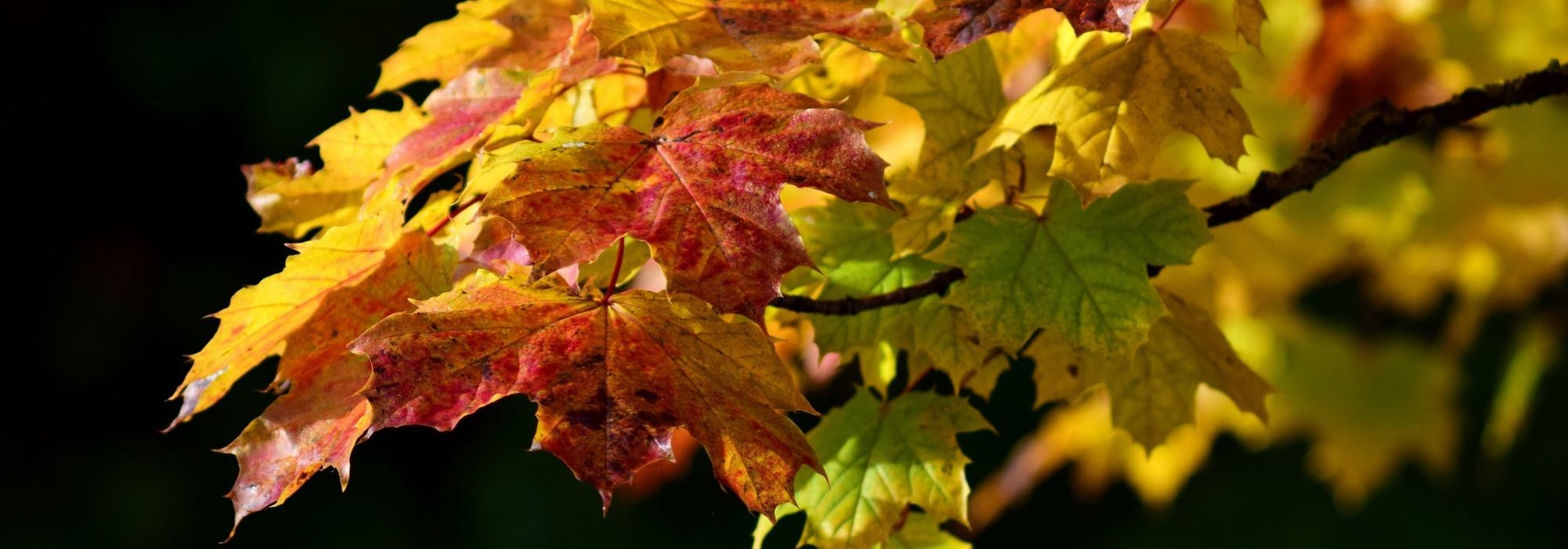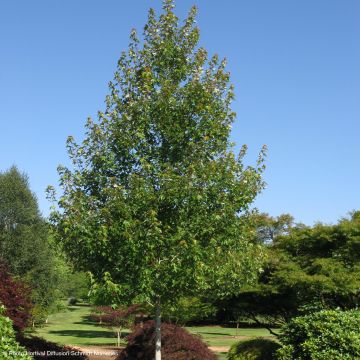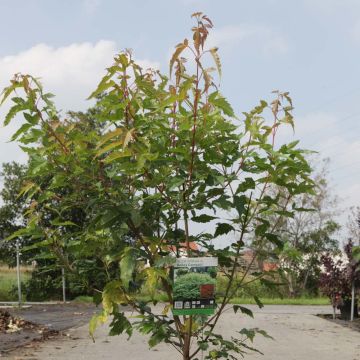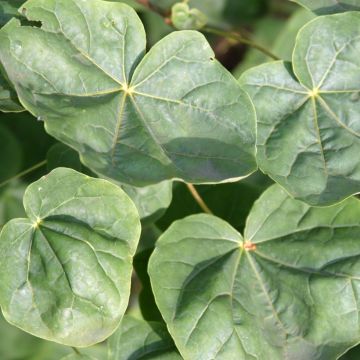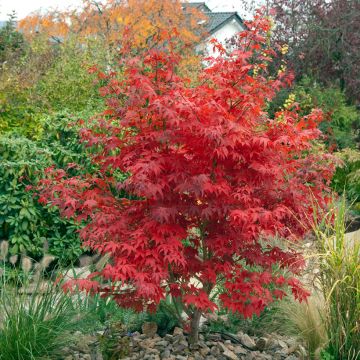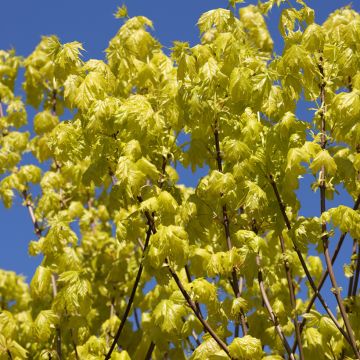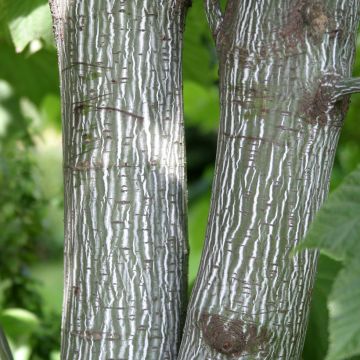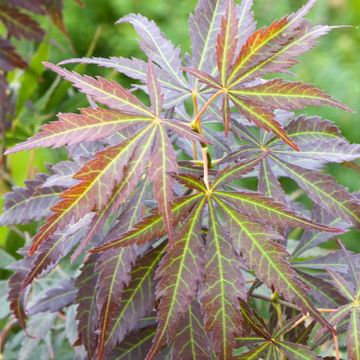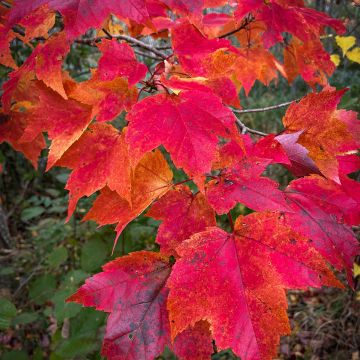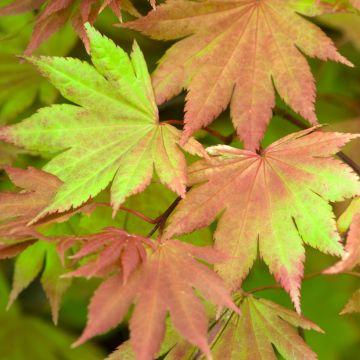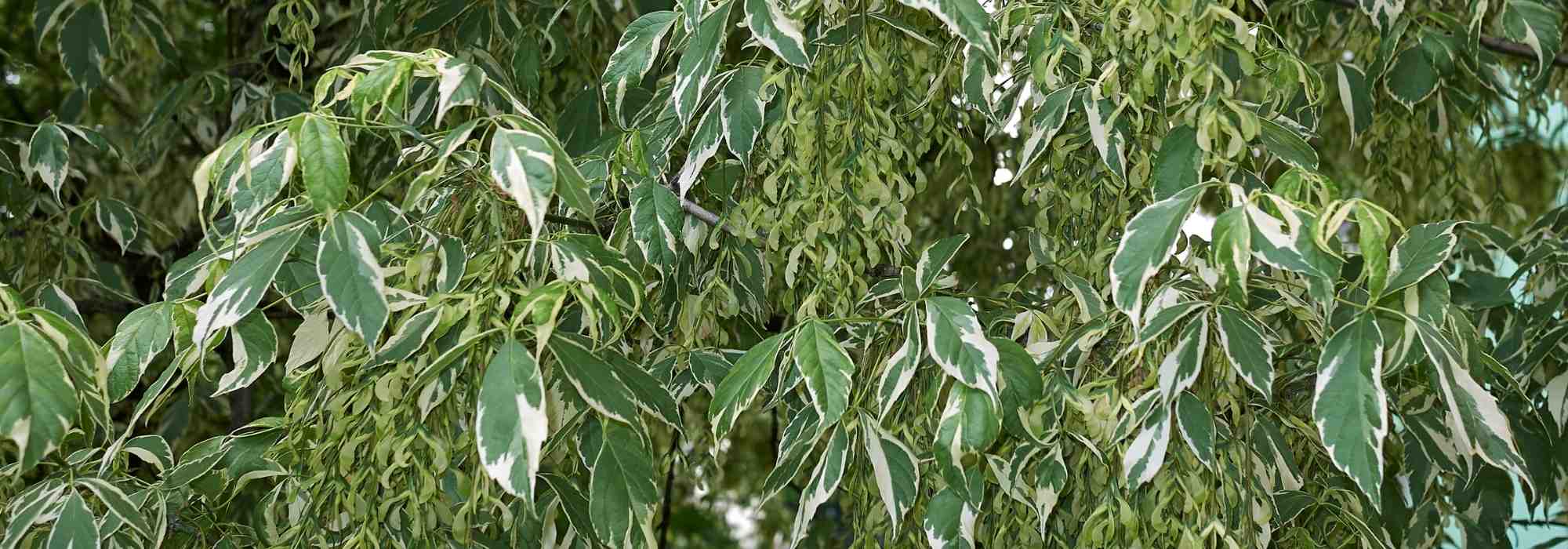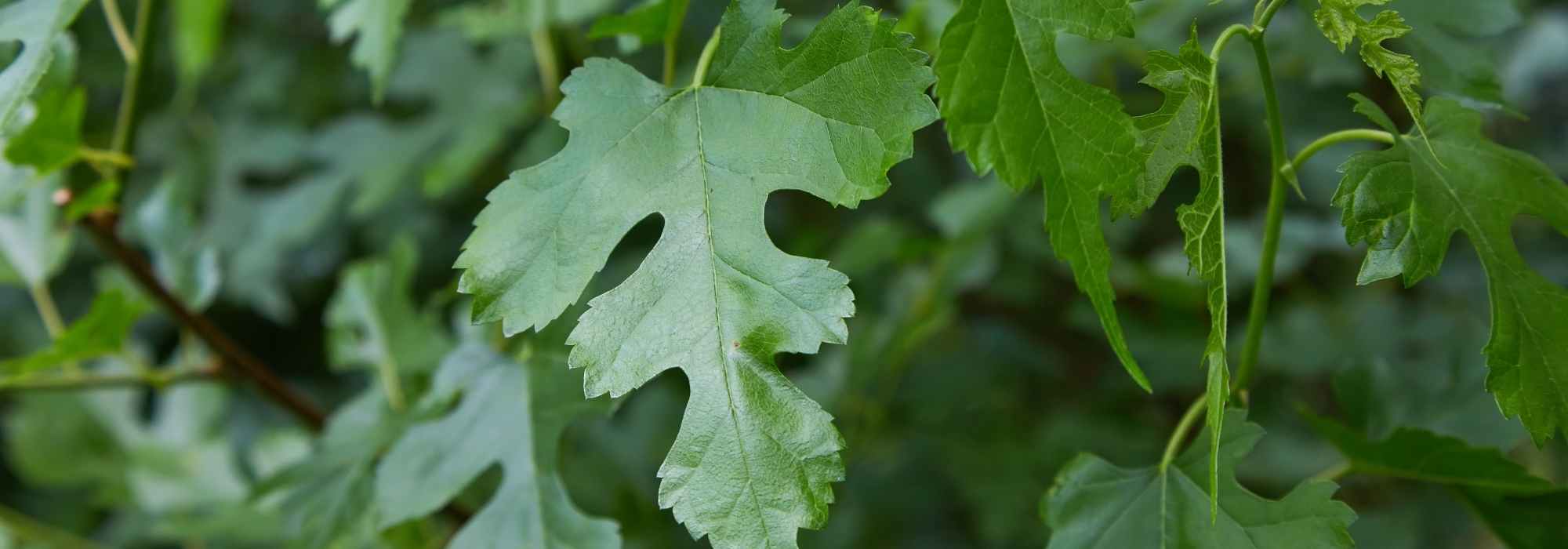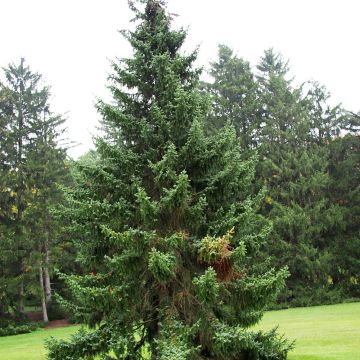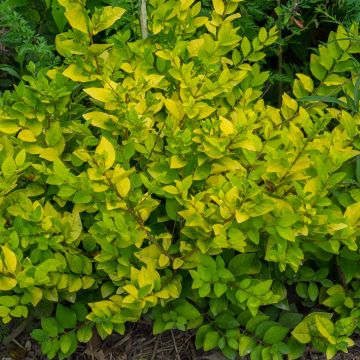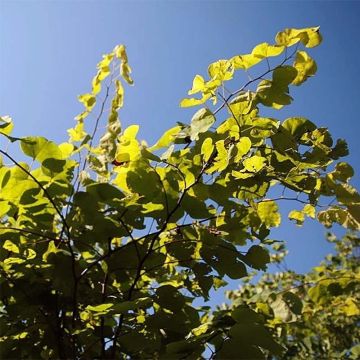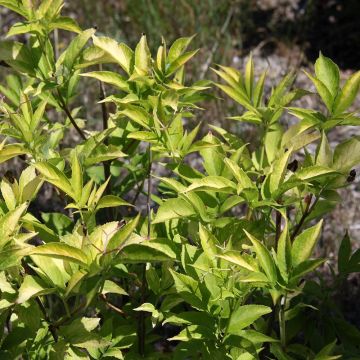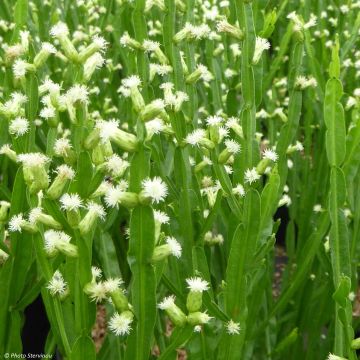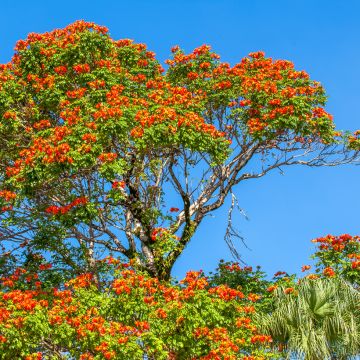

Acer cappadocicum Rubrum - Érable de Colchide rouge
Acer cappadocicum Rubrum - Maple
Acer cappadocicum Rubrum
Cappadocian Maple, Caucasian Maple
Perfect!
Didier, 30/04/2025
Special offer!
Receive a €20 voucher for any order over €90 (excluding delivery costs, credit notes, and plastic-free options)!
1- Add your favorite plants to your cart.
2- Once you have reached €90, confirm your order (you can even choose the delivery date!).
3- As soon as your order is shipped, you will receive an email containing your voucher code, valid for 3 months (90 days).
Your voucher is unique and can only be used once, for any order with a minimum value of €20, excluding delivery costs.
Can be combined with other current offers, non-divisible and non-refundable.
Home or relay delivery (depending on size and destination)
Schedule delivery date,
and select date in basket
This plant carries a 24 months recovery warranty
More information
We guarantee the quality of our plants for a full growing cycle, and will replace at our expense any plant that fails to recover under normal climatic and planting conditions.

Would this plant suit my garden?
Set up your Plantfit profile →
Description
Acer cappadocicum 'Rubrum' is a variety of Cappadocian Maple, stunning with its changing colours. Its foliage emerges bright purple-red in spring, gradually turning bronze-green in summer, and finally golden-yellow in the autumn. This beautiful, rather slow-growing tree, reaches about 15 m (49 inches 2 feets) in height at maturity, with a spread of 10 m. With a rounded and dense habit, it is best placed in medium to large gardens, either as a specimen or in a group of trees. It can also be used to plant in rows, adorning driveways and borders with its sumptuous colours throughout the year. It thrives in slightly shaded positions, in rich, moist and well-drained soil.
Native to the mountainous forests of the Caucasus in Turkey, the Acer cappadocicum, also known as Cappadocian Maple, belongs to the Aceraceae family. The cultivar 'Rubrum' was bred in 1838 by the German nursery James Booth & Sons. Slow-growing, it will reach an average height of 15 to 20 m and form a canopy of 10 to 15 m (32 inches 10 feets - 49 inches 2 feets) in the garden, if left unpruned. It has a rather spreading, wide and dense habit, with a rounded crown. The waxy foliage of this deciduous maple is composed of large leaves measuring 10 to 15 cm (3.9 - 5.9 in) long, with 5 to 7 lobes. A milky sap often oozes from the leaves in this species. The young foliage emerges bright purple-red in spring, turns bronze-green in summer, and then with the first cold spells of autumn a blazing golden-yellow. The insignificant flowering takes place in spring, at the same time as the leaves emerge. The small flowers are greenish and grouped in corymbs. They are followed by winged fruits, often reddish, called samaras. The wings of this fruit are opposite and perfectly aligned. The bark of Acer cappadocicum is streaked with grey-brown and is very decorative. The branches of young specimens often have a purple-brown bark.
Acer cappadocicum 'Rubrum' is easy to grow as long as it is planted in ordinary, deep, moist, well-drained soil. Be aware that its young leaves tend to scorch if the sun becomes too intense. It is best planted in semi-shade. The Cappadocian Maple will be stunning as a free-standing specimen tree, where you can take advantage of its changing foliage from year to year. It will light up small woodlands where it will love the shade and coolness there, and will be majestic along drives and borders.
Acer cappadocicum Rubrum - Maple in pictures
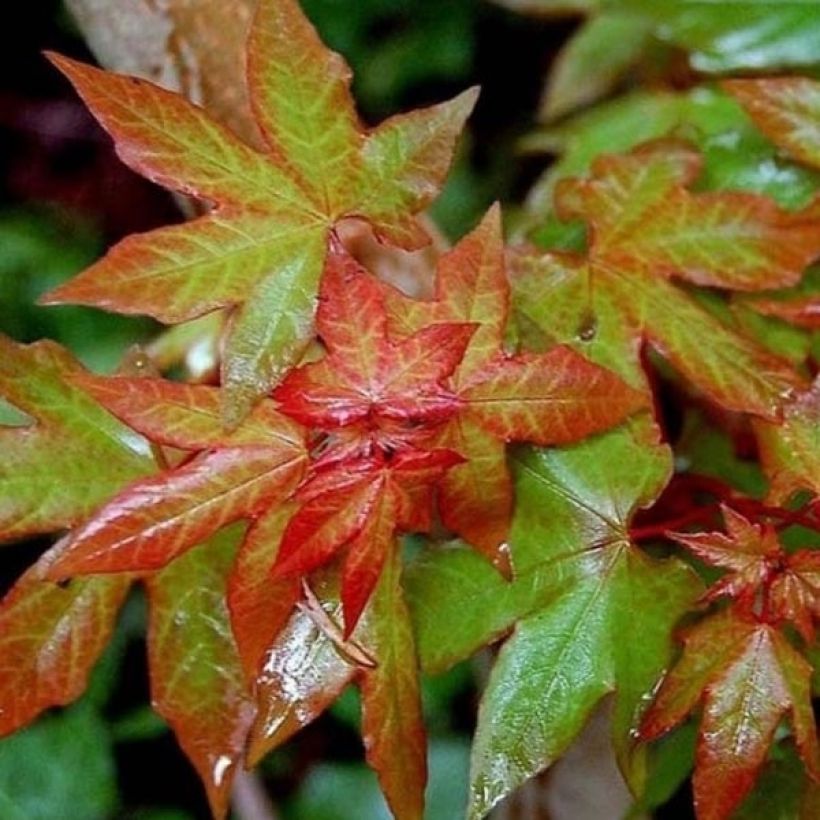

Plant habit
Flowering
Foliage
Botanical data
Acer
cappadocicum
Rubrum
Aceraceae
Cappadocian Maple, Caucasian Maple
Cultivar or hybrid
Other Acer - Maple tree
View all →Planting and care
The Acer cappadocicum should be planted in spring or autumn in any deep, moist, well-drained soils in a sunny or partially shaded position. Once well established, it does not require watering in the summer and requires no maintenance. Beware of strong winds. Keep the soil moist during the first two summers after planting. Mulching can be used to maintain soil moisture.
Planting period
Intended location
Care
Planting & care advice
-
, onOrder confirmed
Reply from on Promesse de fleurs
Similar products
Haven't found what you were looking for?
Hardiness is the lowest winter temperature a plant can endure without suffering serious damage or even dying. However, hardiness is affected by location (a sheltered area, such as a patio), protection (winter cover) and soil type (hardiness is improved by well-drained soil).

Photo Sharing Terms & Conditions
In order to encourage gardeners to interact and share their experiences, Promesse de fleurs offers various media enabling content to be uploaded onto its Site - in particular via the ‘Photo sharing’ module.
The User agrees to refrain from:
- Posting any content that is illegal, prejudicial, insulting, racist, inciteful to hatred, revisionist, contrary to public decency, that infringes on privacy or on the privacy rights of third parties, in particular the publicity rights of persons and goods, intellectual property rights, or the right to privacy.
- Submitting content on behalf of a third party;
- Impersonate the identity of a third party and/or publish any personal information about a third party;
In general, the User undertakes to refrain from any unethical behaviour.
All Content (in particular text, comments, files, images, photos, videos, creative works, etc.), which may be subject to property or intellectual property rights, image or other private rights, shall remain the property of the User, subject to the limited rights granted by the terms of the licence granted by Promesse de fleurs as stated below. Users are at liberty to publish or not to publish such Content on the Site, notably via the ‘Photo Sharing’ facility, and accept that this Content shall be made public and freely accessible, notably on the Internet.
Users further acknowledge, undertake to have ,and guarantee that they hold all necessary rights and permissions to publish such material on the Site, in particular with regard to the legislation in force pertaining to any privacy, property, intellectual property, image, or contractual rights, or rights of any other nature. By publishing such Content on the Site, Users acknowledge accepting full liability as publishers of the Content within the meaning of the law, and grant Promesse de fleurs, free of charge, an inclusive, worldwide licence for the said Content for the entire duration of its publication, including all reproduction, representation, up/downloading, displaying, performing, transmission, and storage rights.
Users also grant permission for their name to be linked to the Content and accept that this link may not always be made available.
By engaging in posting material, Users consent to their Content becoming automatically accessible on the Internet, in particular on other sites and/or blogs and/or web pages of the Promesse de fleurs site, including in particular social pages and the Promesse de fleurs catalogue.
Users may secure the removal of entrusted content free of charge by issuing a simple request via our contact form.
The flowering period indicated on our website applies to countries and regions located in USDA zone 8 (France, the United Kingdom, Ireland, the Netherlands, etc.)
It will vary according to where you live:
- In zones 9 to 10 (Italy, Spain, Greece, etc.), flowering will occur about 2 to 4 weeks earlier.
- In zones 6 to 7 (Germany, Poland, Slovenia, and lower mountainous regions), flowering will be delayed by 2 to 3 weeks.
- In zone 5 (Central Europe, Scandinavia), blooming will be delayed by 3 to 5 weeks.
In temperate climates, pruning of spring-flowering shrubs (forsythia, spireas, etc.) should be done just after flowering.
Pruning of summer-flowering shrubs (Indian Lilac, Perovskia, etc.) can be done in winter or spring.
In cold regions as well as with frost-sensitive plants, avoid pruning too early when severe frosts may still occur.
The planting period indicated on our website applies to countries and regions located in USDA zone 8 (France, United Kingdom, Ireland, Netherlands).
It will vary according to where you live:
- In Mediterranean zones (Marseille, Madrid, Milan, etc.), autumn and winter are the best planting periods.
- In continental zones (Strasbourg, Munich, Vienna, etc.), delay planting by 2 to 3 weeks in spring and bring it forward by 2 to 4 weeks in autumn.
- In mountainous regions (the Alps, Pyrenees, Carpathians, etc.), it is best to plant in late spring (May-June) or late summer (August-September).
The harvesting period indicated on our website applies to countries and regions in USDA zone 8 (France, England, Ireland, the Netherlands).
In colder areas (Scandinavia, Poland, Austria...) fruit and vegetable harvests are likely to be delayed by 3-4 weeks.
In warmer areas (Italy, Spain, Greece, etc.), harvesting will probably take place earlier, depending on weather conditions.
The sowing periods indicated on our website apply to countries and regions within USDA Zone 8 (France, UK, Ireland, Netherlands).
In colder areas (Scandinavia, Poland, Austria...), delay any outdoor sowing by 3-4 weeks, or sow under glass.
In warmer climes (Italy, Spain, Greece, etc.), bring outdoor sowing forward by a few weeks.






























